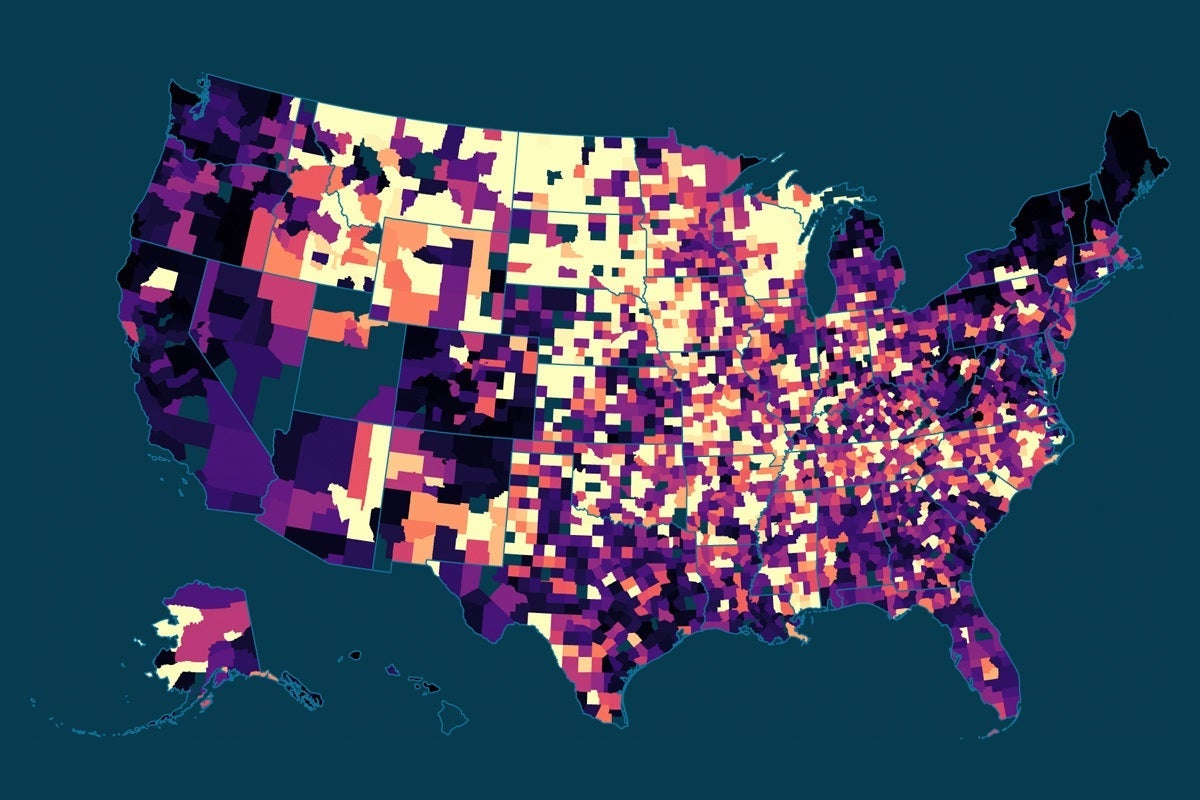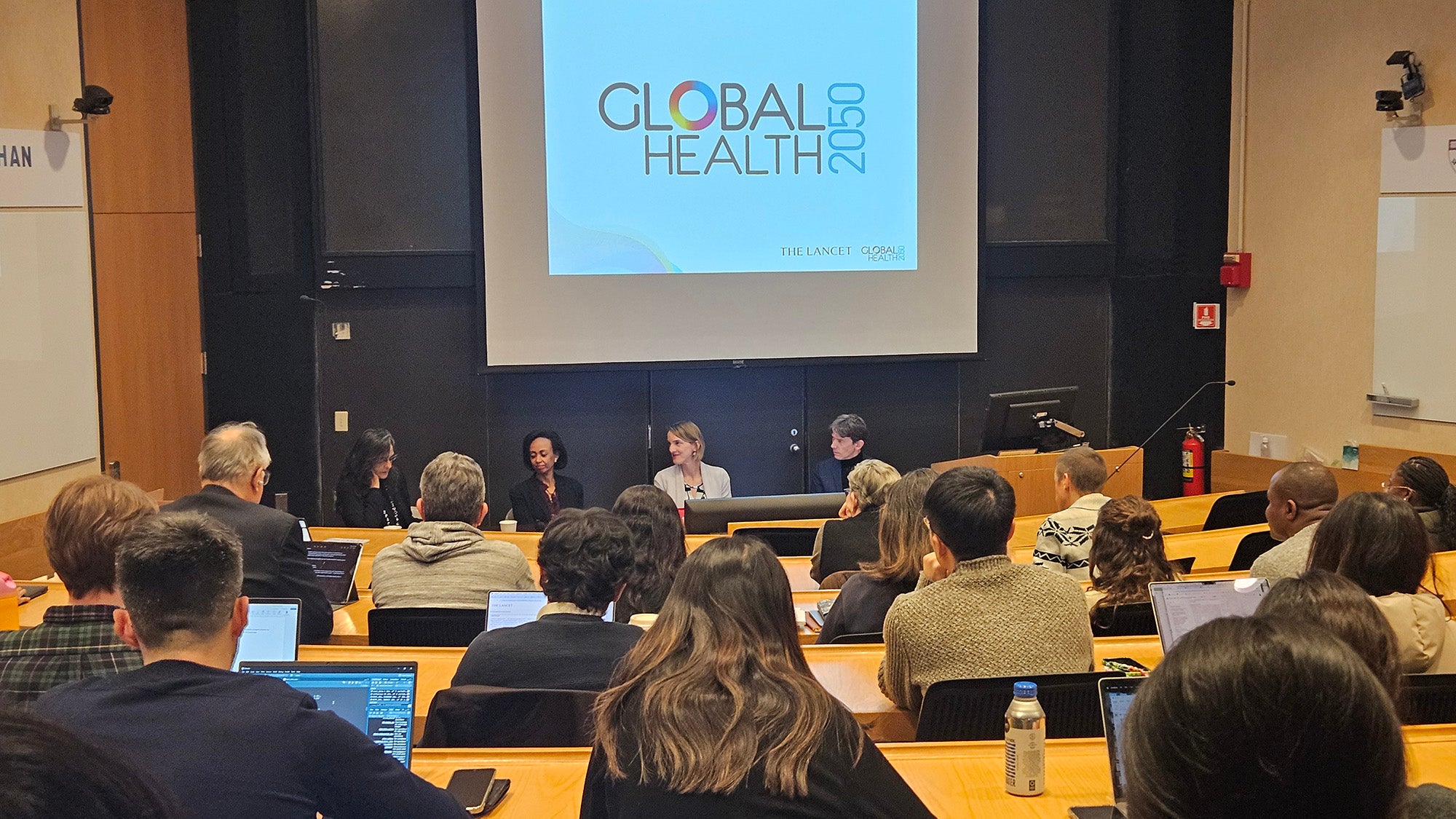Researchers launch COVID-19 model to better understand county-level trends

October 13, 2020 – A new statistical model developed by researchers at Harvard T.H. Chan School of Public Health and Yale School of Public Health allows public health officials, policy makers, and the public to analyze COVID-19 outcomes and make near real-time projections at a local level about disease spread.
The analytic approach combines information about reported cases, reported deaths, disease stage duration, and disease severity and mortality risks. Using this approach, the research team reports estimates about the spread of COVID-19 across all 50 states and more than 3,000 counties in the U.S., which is updated on the “covidestim” website.
“We don’t have fantastic COVID-19 surveillance in the U.S., and so this model can help fill in some of the gaps that exist,” says Nicolas Menzies, assistant professor of global health at Harvard T.H. Chan School and one of the developers of the model. “This tool can help people in the community better understand COVID-19 trends in their state and county.”
The model pulls state-level data from the COVID Tracking Project and county-level data from Johns Hopkins CSSE. Researchers and public health officials can also download and run the model using their own data.
Menzies noted that the model could be an especially useful tool to help public health officials focus on counties where interventions are needed to mitigate COVID-19 transmission. It could also help public health officials earlier spot up and coming hotspots and allow for hospitals in those areas to prepare for surges.
View the “covidestim” model and explore the data.
Photo: via covidestim.org


